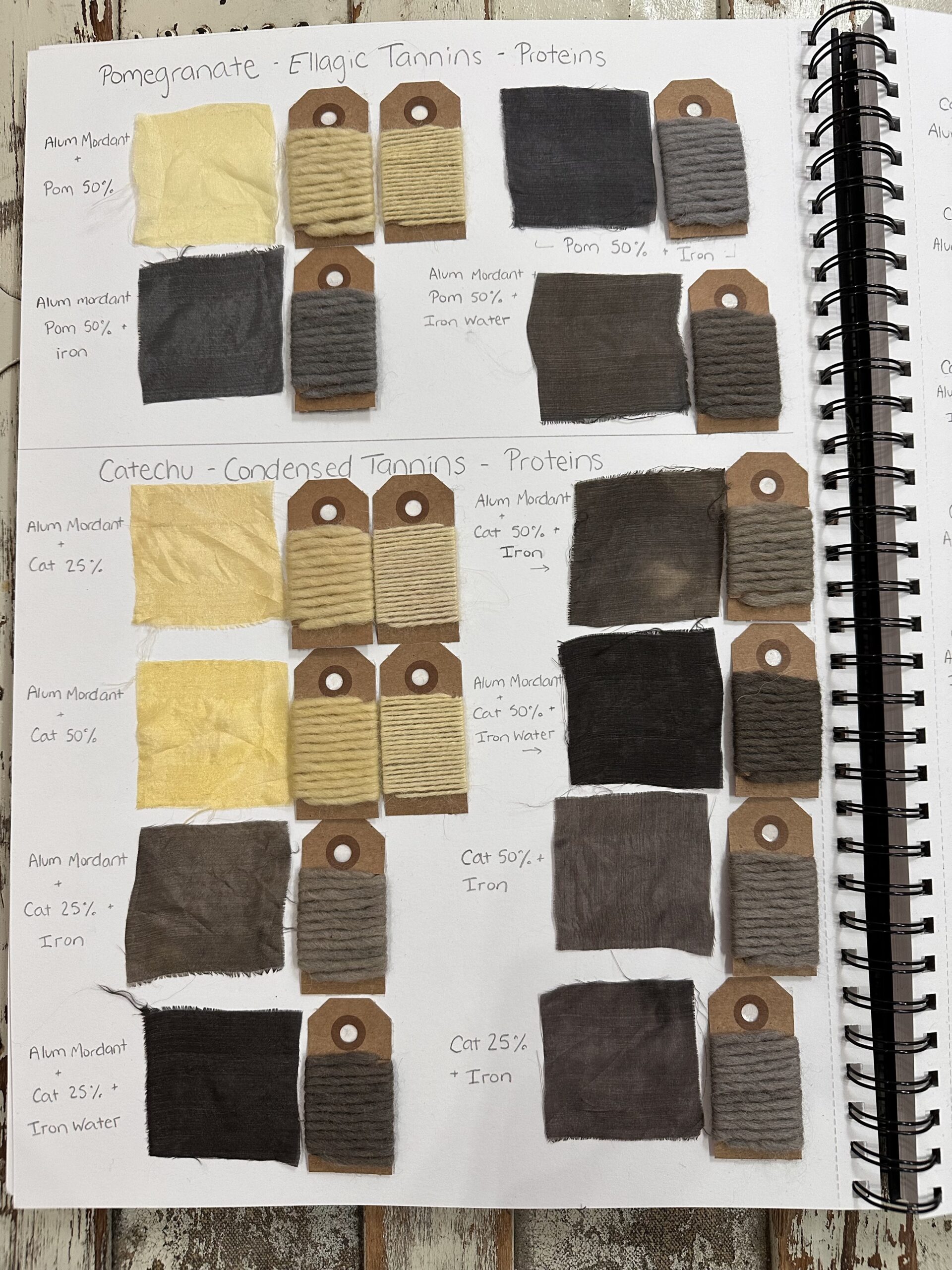As part of an event I ran called Féile na nÚll this year there was a workshop, a great madder experiment if you will, where people who wanted to participate brought tap water from different areas. We messed about a bit with the PH of an additional sample of tap water and threw in a pond sample for good measure just to see what results we got with the same madder in the same quantity of each water.

Common Madder (Rubia tinctorum), was once widely cultivated for red dye – It is one of the oldest known dyestuffs used by people – there are many Egyptian finds dyed with madder, for example – and one of what I call the Big Three of early period staple dyes: Weld, Madder and Woad. The red comes from alizarin, which was obtained grinding up the roots of the plant. It yields shades from orange through red to pink purple, depending on the PH.
The genus is Rubiaceae, the same family as lady’s bedstraw, dyer’s woodruff, cleavers and coffee. At one point I know I got confused and mentioned brassicas but that was meant to be the one for woad, I mixed them up on the spot, my apologies, I blame event steward brain.
It is a common Mediterranean plant, grows in all soil types but prefers full sun – more alkaline soil will promote the redness of the dye. Wild madder is native here in Ireland but isn’t quite as productive for dye stuff, Common Madder does grow here but not widely. It will try to take over your garden id left unattended, so not one for someone with a small space, but it can only deal with relatively light frosts, so some shelter is useful. It is being identified as a dangerously invasive plant in some countries, parts of the US for example, but isn’t an issue here in Ireland. It is easy to grow but you must wait at least two years, ideally four before taking a root harvest. The dye comes from the true roots, which are harvested in Autumn and the red juice makes it very easy to see why it was identified as a good source of colour in early history. As well as dye madder is the source for the pigments rose madder and turkey red – but more about that another day, this time we’ll stick to the dyeing.
My own past experiments with madder yielded a distinctly orange shade of red. I live near bogland in the middle of the country, our water is hard and acidic. I was really keen to get some “softer” water from the east and was absolutely thrilled to get samples from
- Stockholm
- Noordwijkerhout, The Netherlands
- Glasgow
- Phibsboro, Dublin
- Dublin 4
- Smithfield
- Monaghan (ditch water, not tap)
And then we added alkaline to an Offaly tap sample and acid to another, also Offaly, sample. We used the same wool and the same madder.

The tap water madder results – The most orange is the one we added citric acid to, the most purple the one we added soda calcinate to. All the tap waters were in or around PH8 or 9, so pretty neutral. The reddest sample was the water from Noordwijkerhout. Our first match was between Glasgow and Smithfield, but they fared pretty much the same. The D4 sample was a bit pinker and the Stockholm sample was harder to assess because it was a smaller water sample and we used unspun fibre, but it seemed to be heading more towards the pinkish purple (so more alkaline) end. I didn’t expect there to be massive differences in tap water, given most water treatment plants go to some effort to try to create a consistent standard. On our next attempt (at a day revel I have already decided will be called “The Good Day to Dye” – just don’t know when yet) we’re going to bring samples of waters from lakes and rivers and have more pots and access to the cookers.
To demonstrate what a difference that can make here’s what the Monaghan ditch water turned out like – this water was full of iron, I could smell it. – It’s the brown at the top of the picture, a sort of golden brown?
(wasn’t it nice of us to colour coordinate the benches we used to the experiment?)

It was enormous fun even though I had more participants than I realistically had pots and heat sources for, I wasn’t expecting quite so many enthused people! My favourite way to learn about something is to workshop it with other people; we get to share knowledge, brainstorm and come up with all sorts of new things to try, so I am MASSIVELY grateful to everyone who came along and to everyone who carried on experimeting with other dyes after lunch, there were fabulous samples drying later when we went down to see about the fire, I am very impressed!


Leave a Reply